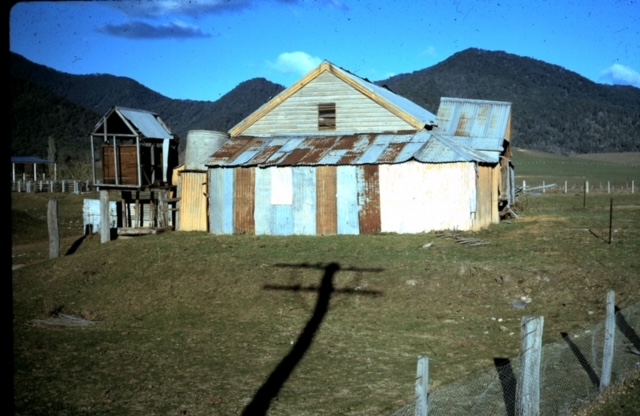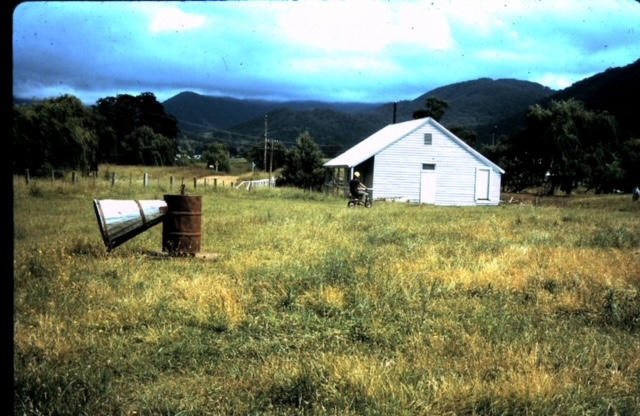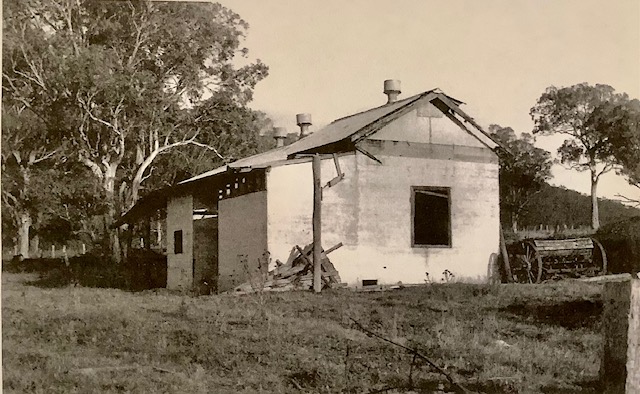Dairy farming in Araluen, while not being a major agricultural industry, was nevertheless an important activity for many years. Early settlers in the valley required milk and butter as staples and often these could be supplied by keeping house cows. Larger properties could afford to have small herds of cattle for their own needs and to sell or trade with others in the local community.
The Braidwood Review and District Advocate of 25 February 1936 observed that ‘The dairying industry has been a big factor in the district’s advancement and prosperity.’
In the nearby area of upper Jembaicumbene Creek, often called Irish Corner and later Reidsdale, a much larger and more active dairy industry was established. When gold was discovered and the population rapidly grew, the dairy farms in this area supplied their products to Araluen and Majors Creek.
In 1880, the centrifugal cream separator was invented in Sweden. This revolutionised the dairy industry, allowing cream and skim milk to be separated from whole milk by a simple mechanical device. This process allowed a more consistent and higher quality butter and cheese to be produced in a shorter time. Many butter and cheese factories came into production on the back of this advance in technology.
Early in the 1900s a cheese factory was established in the valley. The Braidwood Dispatch and Mining Journal reported on 4 September 1901 that ‘the company had a 30 year lease for the factory site from Mr. Alley. The timber was on site and tenders had been called for the erection of the building.’
This was the start of the Araluen, sometimes called Naughton’s Co-operative Cheese Factory. In the booklet, The History of Araluen by Lindsay and Roger Thwaites, it is noted that ‘… the unfamiliar sight of gentle herds of colourful English breeds of dairy cattle wandered through the valley, as fourteen dairies sprung up.’ Being a co-operative operation, all of the farmers held shares in the cheese factory. According to Keith Harrison, in an interview with Chris Woodland in 1993, some of the milk suppliers to the factory included: Silburns, Tom Collins, the Norton brothers, Les Blundell, Bert Atkinson, Bert Walden and Jack Kennedy.
In the 24 May edition of 1905 the Australian Town and Country Journal reported that ‘the average monthly output was about 6,000 lbs. (2,722 kg) of cheese. There were 11 suppliers sending milk to the factory, … all of them well-to-do dairy farmers and graziers of the district.’ Later that year, on Wednesday 16 August, the Sydney Mail and NSW Advertiser reported that ‘under the management of Mr. E. Davidson the cheese factory was doing good work, with a daily average of 250 gallons (946 litres) being supplied.‘ The board of directors at this time included: Messrs. E. Turner, (Managing Director); Thos. Cooper; M. Norton; J. Collins; J. Harrison; A. Fleming and; Mr. Thomas M’Fadden (sic) (Secretary).


The quality of the cheese from the factory was reported by a writer in the Nowra Leader on 3 June 1938, as ‘perfectly matured and equally as good as any produced by the famous south coast factories‘. The report goes on to say that ‘There was at one time an impression that the Araluen pastures were not as suitable as those on the tableland and coast for the production of high grade cheese. That this is all together erroneous is proved by the fact that one Goulburn firm pays the company a halfpenny per lb. above prime loaf price.’
Mr Bert Worland was manager of the factory for nearly 20 years, after having previously managed the short lived Belle Vue cheese factory at Jembaicumbene. During his time at Araluen Mr Worland established a reputation as one of the best cheese makers in the state. One of the largest distribution businesses in Sussex Street thought so highly of his product that it was marketed at top price as a special brand.
During the 1930s a ‘stabilisation’ scheme was introduced by the government which forced many smaller factories, including Araluen, to close due to the imposition of heavy export quotas.1The Braidwood Dispatch and Mining Journal (NSW 1988-1954) Friday 4 August 1959, p 2.
A second cheese factory was opened in the 1930s by Mr George Goward and was located about a kilometre and half along the Neringla Road. Mr Goward had previously supplied milk to the Co-operative Cheese Factory in Araluen. The Goulburn Evening Penny Post of Wednesday 28 February 1940 reported that ‘Mr. Goward had a dairy herd of 117 cows in 1940 when a devastating fire raged through the Araluen valley. The cattle were saved but the heat was so severe that the cheese in the factory melted. The grease from the two and half tonnes of cheese was lying several inches deep on the storeroom floor.‘

The factory eventually got back into production and a reporter from the Braidwood Review and District Advocate of 30 January 1945, wrote a very favourable review of the quality of the cheese noting that ‘Last week we had the pleasure of tasting a sample from his “Hillside” factory which had been maturing for about 12 months. For quality and flavour it would be hard to beat; indeed we doubt if any factory in NSW turns out any better cheese.’
Mr Goward died in October 1952 and in an article in the Braidwood Dispatch and Mining Journal of 31 October 1952 he was remembered as ‘… a prominent and popular figure in the public life of the valley.’ The article notes that the bushfire some years earlier had badly affected the operation of Mr Goward’s cheese factory compelling him to get out of the dairying business.